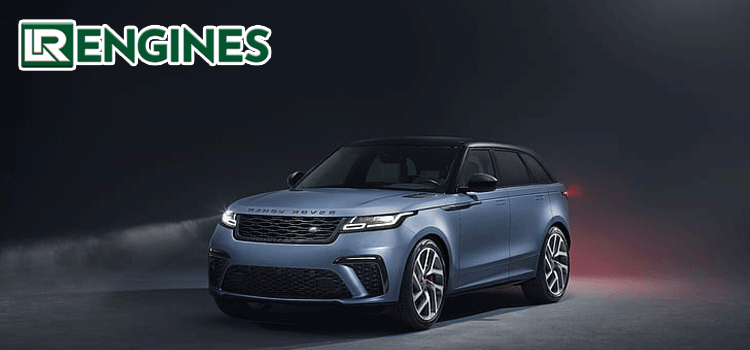What Innovative Technologies Are Integrated Into The Range Rover Engine 2.0?

The Range Rover 2.0 engine is a testament to Land Rover’s commitment to integrating the latest automotive technologies. Designed to deliver unparalleled performance, efficiency, and reliability, this engine is a showcase of modern engineering. We explores the innovative technologies incorporated into the RangeRover 2.0 engine, highlighting how these advancements contribute to its superior performance and overall driving experience.
Advanced Turbocharging Technology
The Range Rover 2.0 engine features an advanced twin-scroll turbocharger, a significant innovation that enhances power delivery and efficiency. This technology separates the exhaust pulses from pairs of cylinders, ensuring optimal energy use to spin the turbocharger. As a result, the engine experiences reduced turbo lag and improved throttle response, delivering power seamlessly across a wide range of engine speeds.
Moreover, the twin-scroll design contributes to better fuel economy by optimizing the combustion process. By enhancing the efficiency of air intake and exhaust outflow, the turbocharger ensures that the engine operates at its peak performance, whether navigating city streets or tackling off-road adventures.
Direct Fuel Injection System
A key innovation in the Range Rover engine is its direct fuel injection system. This technology precisely injects fuel directly into the combustion chamber at high pressure, allowing for more accurate fuel delivery and improved combustion efficiency. The result is enhanced power output and torque, as well as reduced emissions and better fuel economy.
Direct fuel injection helps in achieving a more controlled and efficient combustion process, which not only boosts performance but also contributes to the engine’s durability. By ensuring optimal fuel atomization and distribution, this system minimizes engine knocking and promotes smoother operation under various driving conditions.
Variable Valve Timing
The integration of variable valve timing (VVT) technology in the Range Rover engine represents a significant leap forward in optimizing engine performance. VVT allows for the adjustment of the timing of the intake and exhaust valves, depending on the engine’s operating conditions. This flexibility enhances both power and efficiency by ensuring that the engine breathes optimally across different RPM ranges.
VVT improves low-end torque and high-end power, offering a broad and usable powerband. This technology not only enhances driving dynamics but also contributes to better fuel efficiency and lower emissions. By continuously adapting to the driver’s demands, VVT ensures that the engine operates at its best in any scenario.
Lightweight Aluminum Construction
The use of lightweight aluminum in the construction of the Range Rover engine is a noteworthy innovation that contributes to both performance and efficiency. Aluminum is significantly lighter than traditional engine materials, such as cast iron, reducing the overall weight of the vehicle. This weight reduction enhances fuel efficiency, improves handling, and reduces wear and tear on the engine components.
Additionally, aluminum offers excellent thermal conductivity, helping to dissipate heat more effectively. This property is crucial in maintaining optimal operating temperatures, thereby enhancing the engine’s reliability and longevity. The lightweight construction of the Range Rover engine exemplifies the innovative approach to balancing performance and efficiency.
Integrated Exhaust Manifold
The integrated exhaust manifold (IEM) in the RangeRover 2.0 engine is a cutting-edge technology that enhances both performance and emissions control. By incorporating the exhaust manifold directly into the cylinder head, the IEM reduces the distance exhaust gases travel, resulting in quicker warm-up times and improved catalytic converter efficiency.
This design minimizes heat loss and enhances the efficiency of the turbocharger, leading to better throttle response and reduced turbo lag. The IEM also contributes to lower emissions by ensuring that the catalytic converter reaches its optimal operating temperature more rapidly. This innovation underscores the engine’s commitment to performance, efficiency, and environmental responsibility.
Start-Stop Technology
Start-stop technology is an innovative feature integrated into the Range Rover 2.0 engine to improve fuel efficiency and reduce emissions. This system automatically shuts off the engine when the vehicle comes to a stop, such as at traffic lights, and restarts it when the driver releases the brake pedal. By reducing idle times, start-stop technology conserves fuel and minimizes CO2 emissions.
The system is designed to operate seamlessly, with minimal impact on the driving experience. Advanced sensors and control units ensure that the engine restarts quickly and smoothly, providing immediate power when needed. This technology not only enhances fuel efficiency but also contributes to the overall sustainability of the vehicle.
Advanced Engine Management System
The Range Rover 2.0 engine features a sophisticated Engine Management System (EMS) that plays a crucial role in optimizing performance and efficiency. The EMS uses a network of sensors to monitor various engine parameters, such as temperature, pressure, and air-fuel ratio. It processes this data in real-time and makes precise adjustments to ensure optimal engine operation.
The advanced EMS contributes to improved fuel efficiency, reduced emissions, and enhanced driving dynamics. It also supports other innovative technologies, such as direct fuel injection and variable valve timing, by providing the necessary control and coordination. The integration of this advanced system highlights the technological prowess of the Range Rover 2.0 engine.
Hybrid Compatibility
In response to growing environmental concerns and regulatory requirements, the Range Rover 2.0 engine is designed to be compatible with hybrid systems. This compatibility allows for the integration of electric motors and battery systems, creating a hybrid powertrain that offers both improved fuel efficiency and reduced emissions.
The hybrid-compatible design ensures that the engine can seamlessly switch between conventional and electric power, or use a combination of both, depending on the driving conditions. This flexibility enhances the vehicle’s overall efficiency and reduces its carbon footprint. The integration of hybrid technology demonstrates Land Rover’s commitment to sustainability and innovation.


